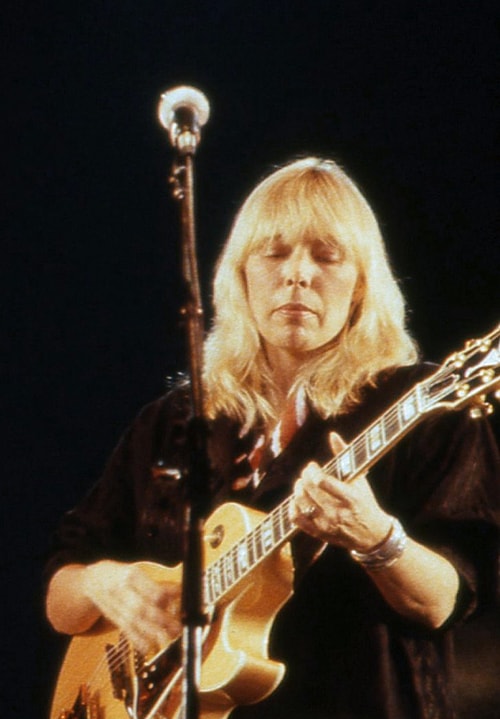In 1979, WBCN-FM in Boston offered its listeners a fantastic deal: tell us what you think are the 10 best rock albums of all time, and we’ll tabulate the results and play the 104 albums with the most votes (the station’s frequency was 104.7), one per evening, Sunday through Thursday nights. They also offered prizes for the top three voters who came the closest to correctly naming the top 10 albums.
The local weeklies printed ballots and we quickly flooded the station with them. WBCN heard from listeners who took this assignment seriously (me); musical illiterates (the male co-worker who wrote down “the Yes album,” then asked me if I knew the name of the Yes album, which I told him was The Yes Album); haters, goofballs, cranks, and super fans. The BCN jocks, in a breach of election security, read many of the more interesting entries on the air. The one example I remember is the unsung hero who filled his ballot with 10 Dave Clark Five albums.
This fabled list seems to have vanished down the back alleys of time, but I can tell you that Sgt. Pepper’s finished first, The Dark Side of the Moon second, Sticky Fingers third, and the 104th spot was occupied by Bad Company’s 1974 debut doorstop, Bad Company. Yes, you read that correctly. It was 1979, rock was barely 25 years old, and the station’s listeners ran out of worthy albums before they got to the 104th.
Or did they? Maybe all we needed was a 1979 version of NPR’s “Turning the Tables: The 150 Greatest Albums Made By Women.”
Turning the Tables was put together by a group of female critics and released on NPR.org in 2017. There’s nothing like a best-of list to angry up the blood. On Turning the Tables, I cried out when I saw the Spice Girls sneak past Tammy Wynette, Donna Summer, and Roberta Flack. How did the Carpenters trash Sonic Youth and the B-52’s? Tracy Chapman trumped Heart but trailed Blondie? There was plenty to argue about!
Even if I hadn’t read the accompanying essay, “A New Canon: In Pop Music, Women Belong at the Center of the Story,” by Ann Powers, I would’ve known this list was put together by critics, because the Bulgarian State Radio & Television Choir snagged no. 78 with Le Mystère des Voix Bulgares. NPR’s listeners would’ve picked Pat Benatar. In fact, NPR’s listeners did pick Pat Benatar, in a list that was crowdsourced and posted on NPR.org. (Sadly, that list is long gone. Never cross a critic.)
Who’s Your Mommy?
By comparing Turning the Tables to Rolling Stone’s 500 Best Albums of All Time, I learned that no one can dominate popular music like a small group of men.
The evidence:
- On the Rolling Stone list, seven artists placed 15 albums in the top 50: five by the Beatles, three by Bob Dylan, and two each by Michael Jackson, Prince, Radiohead, the Rolling Stones, and Stevie Wonder. That’s 30 percent of the top 50 records.
- On Turning the Tables, seven artists also accounted for 15 albums: three by Aretha Franklin and two each by Beyoncé, Joan Jett, Madonna, Joni Mitchell, Stevie Nicks, and Nina Simone. But that’s 15 out of 150 albums.
What does this tell us about the differences between men and women? About the music industry and its support for women in comparison with men? Does it mean that critics thrive on variety? Or does it just tell us that the Beatles were a quantum singularity?
I am not sufficiently credentialed to make that call. But if you’d like another list where even fewer men rule, I invite you to visit the Pitchfork 200. In 2021, Pitchfork asked its readers to mark the site’s 25th anniversary by choosing the 200 best albums since 1996. Radiohead, Kendrick Lamar, and Arcade Fire gobbled up six of the top 10 spots and combined for 18 albums total. At least Arcade Fire has a woman in the band.
Enough With the Math
What I love about these best-ofs is the chance to hear new music and to be reintroduced to old music. Turning the Tables reminded me of the artistry of Nina Simone (I Put a Spell on You, no. 3, and Nina Simone Sings the Blues, no. 28). How do you forget Nina Simone? Somehow, I did! I discovered that Sinéad O’Connor was not a female Bono without the dorky glasses (I Do Not Want What I Haven’t Got, no. 67), and that Alanis Morissette was a lot more than the one song that carpet-bombed North America in 1995, “You Oughta Know” (Jagged Little Pill, no. 29). I was floored by two women I had barely heard of, Mary J. Blige (What’s the 411?, no. 57) and Shakira (¿Dónde Están los Ladrones?, no. 95). And I loved meeting ESG (Come Away with ESG, no. 104). This punk/rap dance set is as fresh a party record as it was back in 1983.
In her essay, Powers reveals that Turning the Tables originally had more than 500 albums. She doesn’t explain why they cut the list to 150, but this probably accounts for the absence of Joan Armatrading, Diana Ross minus the Supremes, Lorde, Lana Del Rey, and two of my favorites from the ’80s, Bonnie Hayes (“Girls Like Me” and “Shelly’s Boyfriend” from the Valley Girl soundtrack) and Romeo Void (the “I might like you better if we slept together” song).
I would love to give the missing 350 a hearing, even though Pat Benatar is probably lurking in an outer orbit. Someone might want me to vote for something.
(Note: Bad Company did not make the Rolling Stone 500.)
Header image: Joni Mitchell, courtesy of Wikimedia Commons/Capannelle.



